It looks like you're using an Ad Blocker.
Please white-list or disable AboveTopSecret.com in your ad-blocking tool.
Thank you.
Some features of ATS will be disabled while you continue to use an ad-blocker.
15
share:
Hey ATS!
Here's an interesting article about discoveries on Venus.
Wikipedia
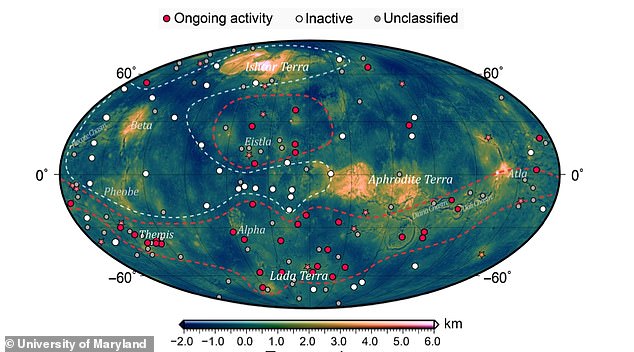
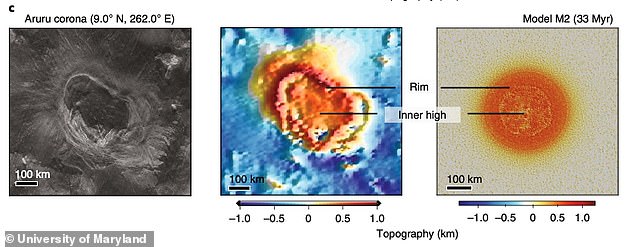
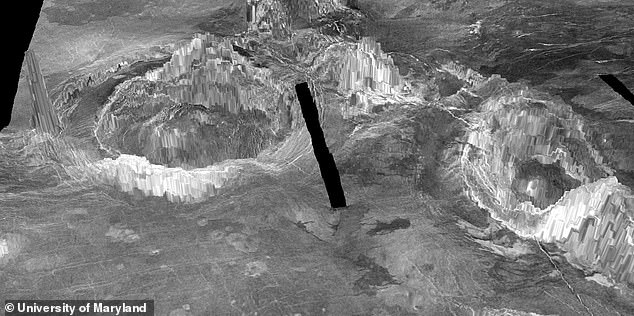

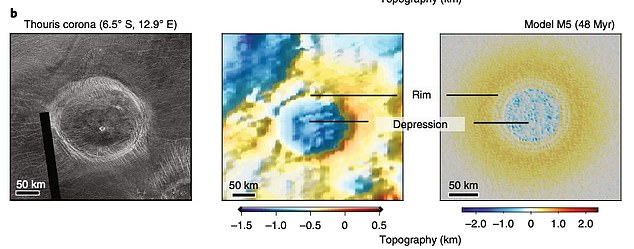
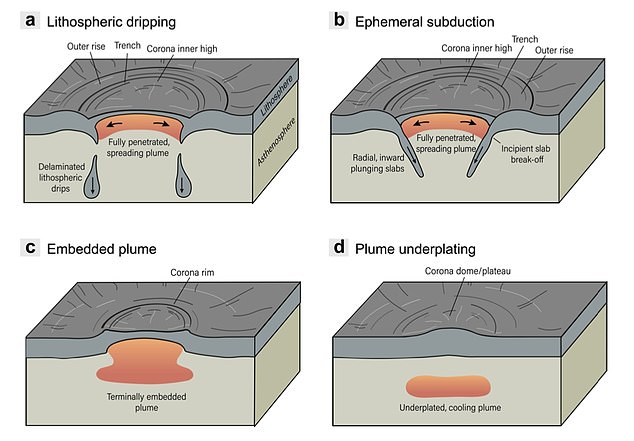
So it turns out there are active volcanic structures called 'coronae' on Venus and they are somewhat similar to Earth volcanoes. How do you feel about this? Do they really form the way we're told or is there something else behind them?
Here's an interesting article about discoveries on Venus.
Venus is geologically active and has as many as 37 recently 'live' volcanic structures called coronae that are dotted across its surface, according to astrogeologists.
In planetary geology, a corona /kəˈroʊnə/ (plural: coronae /kəˈroʊniː/) is an oval-shaped feature. Coronae appear on both the planet Venus and Uranus's moon Miranda and may be formed by upwellings of warm material below the surface.
Wikipedia
Researchers from the University of Maryland and the Institute of Geophysics, Zurich, created 3D models to investigate whether the coronae could be geologically active. They found that rather than coronae being formed from geological activity more than 500 million years ago, they come from currently active processes.
The ring-like structures are formed when hot material from deep inside the planet rises through the mantle and erupts through the crust.

The team studied different images of coronae taken from orbiting satellites and compared them to 3D computer models they created themselves

With 65 per cent of the planet consisting of a mosaic of volcanic lava plains, scientists have known for some time Venus has a younger surface than the other 'non-Earth' rocky planets Mars and Mercury. Evidence of a warm interior and geologic activity dots the surface of the planet in the form of ring-like structures known as coronae. The ring-like structures are formed when hot material from deep inside the planet rises through the mantle and erupts through the crust.

This is a 2D cross-section through the centre of the model of Venus created by the researchers to determine how 'tectonic' and other activity might occur. It shows in weak areas of lithosphere plumes are able to break through and form circular 'coronae' on the surface

These features form when plumes of hot material deep inside the planet rise through the mantle layer and crust - similar to plumes from Hawaiian island volcanoes.
'Our study presents new evidence for recent tectonic and magmatic activity on the surface of Venus, complementing other indications of such activity,' they said. 'The global arrangement of active coronae suggests a large-scale organization of tectono-magmatic activity on the planet.' These results may help identify target areas where geologic instruments should be placed on future missions to Venus. This could include Europe's EnVision that is scheduled to launch on Venus in 2032. They say that areas with a thin lithosphere allow plumes from deep inside the planet to penetrate through and form a coronae.

These sketches of the four different processes predicted to exist inside Venus for creating different types of coronae on the surface

'The study was published in the journal Nature Geoscience.
Venus' atmosphere consists mainly of carbon dioxide, with clouds of sulphuric acid droplets. The thick atmosphere traps the sun's heat, resulting in surface temperatures higher than 470°C (880°F). The atmosphere has many layers with different temperatures. At the level where the clouds are, about 30 miles (50 km) up from the surface, it's about the same temperature as on the surface of the Earth.
So it turns out there are active volcanic structures called 'coronae' on Venus and they are somewhat similar to Earth volcanoes. How do you feel about this? Do they really form the way we're told or is there something else behind them?
Was thinking about this the other day, glad you cleared that up
Earth has volcanos, why couldn't any other planet? Jupiter has hurricanes. I think it's cool as hell.
a reply to: Anon283799
Thank you so much for posting this.
So glad to have something really cool to read about.
Thank you so much for posting this.
So glad to have something really cool to read about.
originally posted by: gdkknxnqkc
a reply to: Anon283799
It would be interesting if they could gather samples from the cloud layer.
I would love to see a mission to sample the clouds. NASA has a few that are under study for possible future missions.
There are cloud layers at Venus where conditions are quite Earth-like in temperature and pressure, and contain water and nutrients. Astrobiologists have speculated that life as we know it may exist in those cloud layers.
NASA astrobiologist (and sci-fi author) Geoffrey Landis wrote a paper about 15 years ago that discussed this possibility, and discussed some chemical dis-equilibriums in Venus' atmosphere that might (but not necessarily) be due to life processes.
Astrobiology: The Case for Venus (NASA paper)
From that paper:
There is some evidence that the trace-gas constituents of the Venus atmosphere are not in chemical equilibrium with each other. On Earth, the primary source of disequilibrium in theatmospheric chemistry is the activities of biological processing; could disequilibrium on Venusalso be a sign of life? In 1997, David Grinspoon made the suggestion that microbes in the clouds and middle atmosphere could be the source of the disequilibrium...
...Hydrogen sulfide and sulfur dioxide, two gases which react with each other and thus should not be found together, are also both present, indicating some process (possibly biological?) is producing them. Finally, although carbonyl sulfide is difficult to produce inorganically, it is present in the Venusian atmosphere. On Earth, this gas would be considered an unambiguous indicator of biological activity. While none of these chemical combinations are in themselves an unambiguous sign of life, it is interesting enough to warrant a more careful look at the atmospheric chemistry.
edit on 7/21/2020 by Soylent Green Is People because: (no reason given)
Flashback
Soviet Balloon Probes May Have Seen Rain on Venus
Soviet Balloon Probes May Have Seen Rain on Venus
A pair of balloon probes that floated in the atmosphere of Venus nearly 30 years ago may have run into a drizzle.
This being Earth’s hellish sister planet – where surface pressure is akin to being 900 m underwater and average temperatures are hot enough to melt lead – the shower wasn’t made of friendly water but rather corrosive sulfuric acid. The finding comes from a re-analysis of data taken by the Vega 1 and 2 missions and may represent the first onsite detection of rain ever made outside of Earth.
In 1984, the Soviet Union joined with several European countries to launch the Vega probes, a complex mission that dropped a pair of landers and balloons on Venus and then sent two spacecraft to make close encounters with Halley’s comet in 1986. No other mission has ever deployed balloons on another planet....
If the findings were proven, they would be the first onsite detection of rain on another planet. The European Space Agency’s Huygens probe, which landed on Saturn’s moon Titan in 2005, may have photographed a liquid drop from rain, though whether this came from the moon or the probe isn’t known.
new topics
-
President BIDEN Vows to Make Americans Pay More Federal Taxes in 2025 - Political Suicide.
2024 Elections: 1 hours ago -
Ode to Artemis
General Chit Chat: 2 hours ago -
Ditching physical money
History: 5 hours ago -
One Flame Throwing Robot Dog for Christmas Please!
Weaponry: 6 hours ago -
Don't take advantage of people just because it seems easy it will backfire
Rant: 6 hours ago -
VirginOfGrand says hello
Introductions: 7 hours ago -
Should Biden Replace Harris With AOC On the 2024 Democrat Ticket?
2024 Elections: 7 hours ago -
University student disciplined after saying veganism is wrong and gender fluidity is stupid
Education and Media: 10 hours ago -
Geddy Lee in Conversation with Alex Lifeson - My Effin’ Life
People: 11 hours ago -
God lived as a Devil Dog.
Short Stories: 11 hours ago
top topics
-
Hate makes for strange bedfellows
US Political Madness: 16 hours ago, 20 flags -
University student disciplined after saying veganism is wrong and gender fluidity is stupid
Education and Media: 10 hours ago, 12 flags -
Police clash with St George’s Day protesters at central London rally
Social Issues and Civil Unrest: 13 hours ago, 9 flags -
President BIDEN Vows to Make Americans Pay More Federal Taxes in 2025 - Political Suicide.
2024 Elections: 1 hours ago, 7 flags -
TLDR post about ATS and why I love it and hope we all stay together somewhere
General Chit Chat: 14 hours ago, 7 flags -
Should Biden Replace Harris With AOC On the 2024 Democrat Ticket?
2024 Elections: 7 hours ago, 6 flags -
Don't take advantage of people just because it seems easy it will backfire
Rant: 6 hours ago, 4 flags -
One Flame Throwing Robot Dog for Christmas Please!
Weaponry: 6 hours ago, 4 flags -
God lived as a Devil Dog.
Short Stories: 11 hours ago, 3 flags -
Ditching physical money
History: 5 hours ago, 3 flags
active topics
-
Why to avoid TikTok
Education and Media • 17 • : mooncake -
The Superstition of Full Moons Filling Hospitals Turns Out To Be True!
Medical Issues & Conspiracies • 22 • : mooncake -
University student disciplined after saying veganism is wrong and gender fluidity is stupid
Education and Media • 23 • : BigDuckEnergy -
President BIDEN Vows to Make Americans Pay More Federal Taxes in 2025 - Political Suicide.
2024 Elections • 3 • : BingoMcGoof -
Russia Ukraine Update Thread - part 3
World War Three • 5717 • : Arbitrageur -
Should Biden Replace Harris With AOC On the 2024 Democrat Ticket?
2024 Elections • 44 • : budzprime69 -
Hundreds of teenagers flood into downtown Chicago, smashing car windows
Other Current Events • 111 • : 777Vader -
British TV Presenter Refuses To Use Guest's Preferred Pronouns
Education and Media • 125 • : Annee -
Who guards the guards
US Political Madness • 4 • : kwaka -
New whistleblower Jason Sands speaks on Twitter Spaces last night.
Aliens and UFOs • 44 • : pianopraze
15
